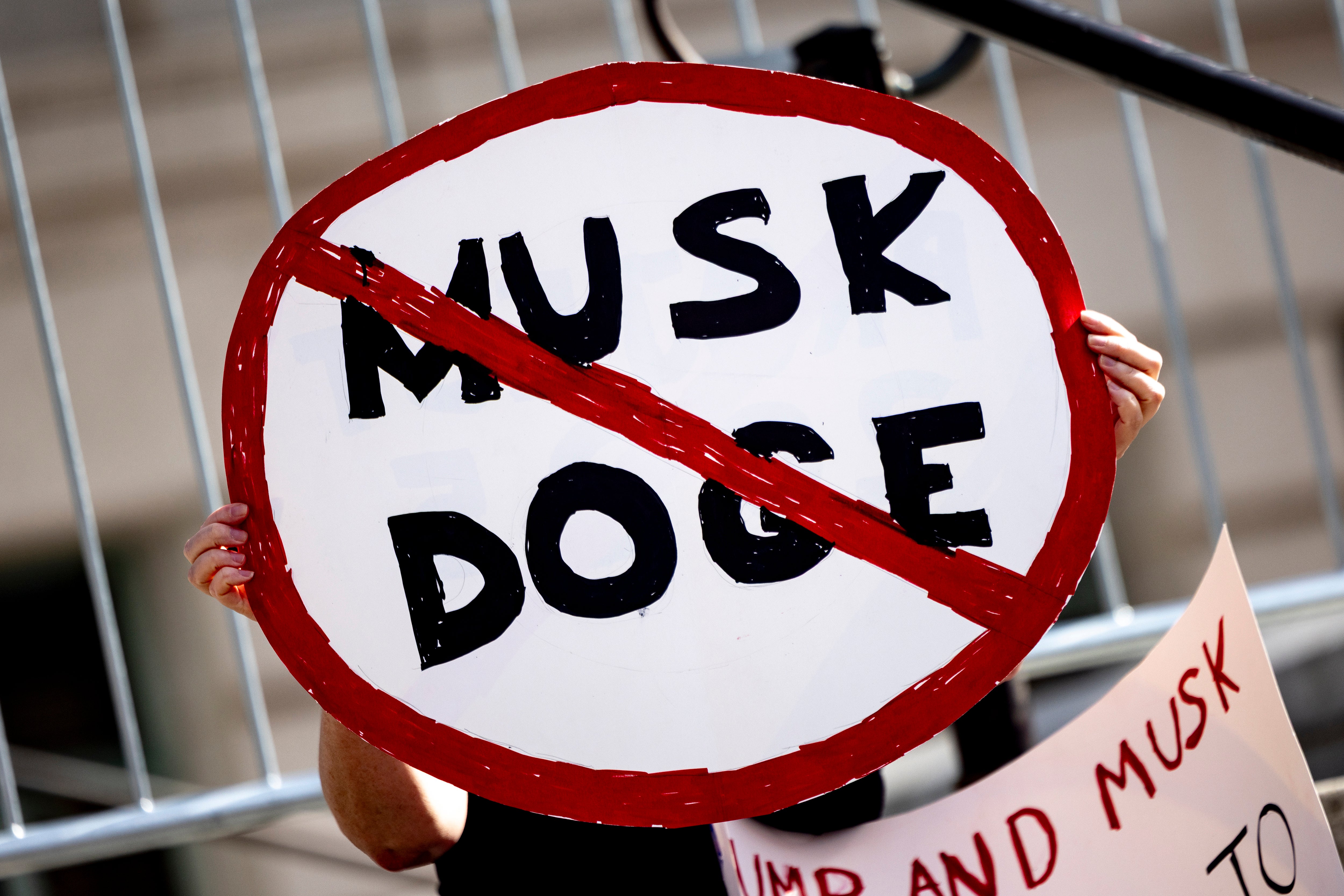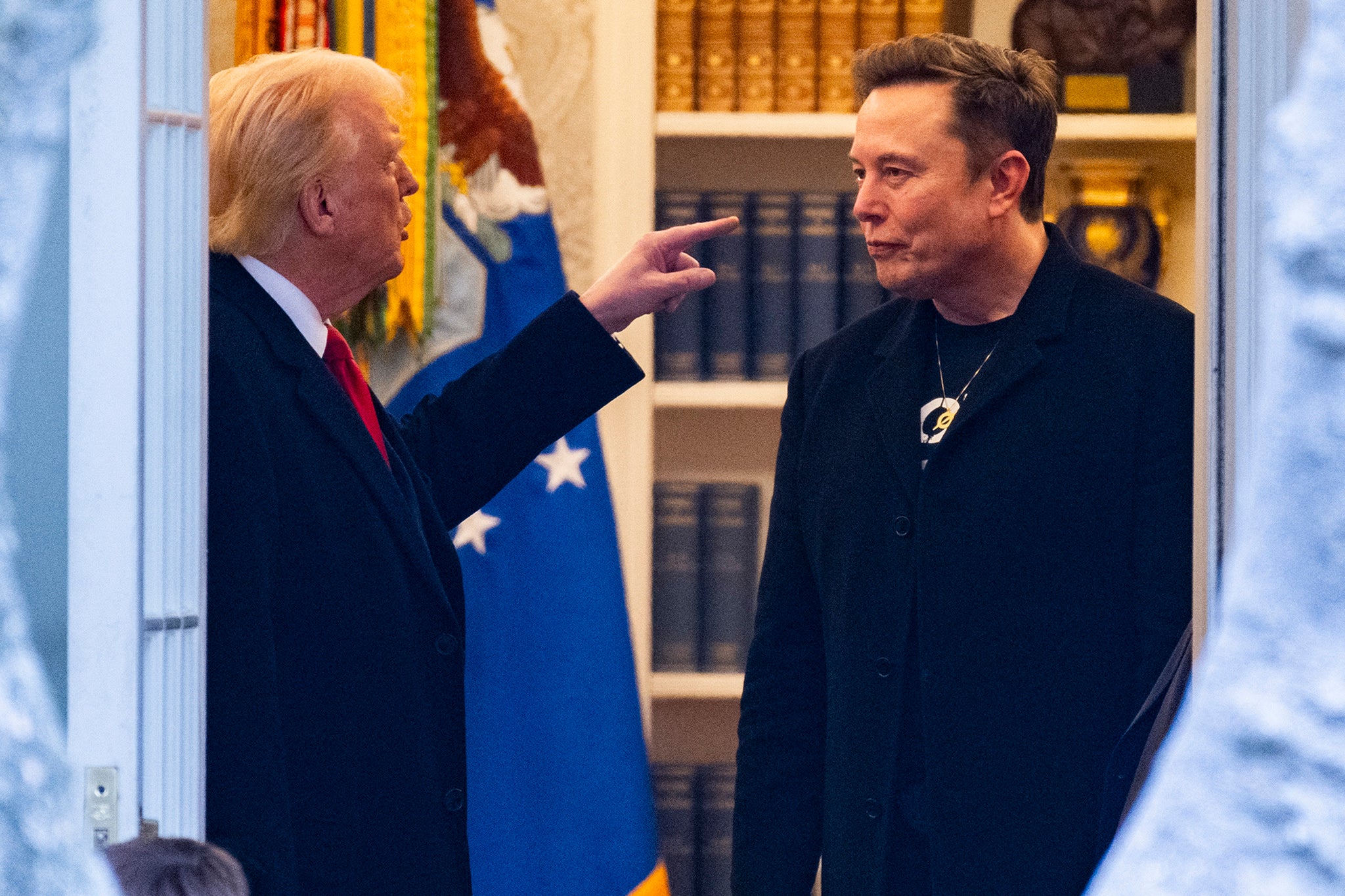CNN
—
Elon Musk’s Department of Government Efficiency has been Donald Trump’s battering ram during the president’s first 100 days, slashing the federal government and trying to bend its remnants to Trump’s will.
Driven by a band of 20-something coders and computer experts burrowing into agencies across the government, DOGE has thrown aside norms – and in some cases, federal laws – to forcibly cut spending, cancel federal contracts and building leases, and dismantle entire agencies.
DOGE has forced its way into some of the government’s most sensitive systems, which process trillions of dollars in federal payments and contain personal data for hundreds of millions of Americans, as well as federal workers and immigrants. Along the way, it’s fired more than 100,000 government employees, including highly trained scientists and experts in a host of fields such as public health, foreign aid and diplomacy and disaster management.
Musk, the world’s richest man, has served as the face of DOGE, trumpeting its findings – often riddled with inaccuracies or mischaracterizations. In Trump’s first 100 days, he frequently looked to be the second most powerful person in the government – appearing alongside Trump for joint interviews and being depicted on a February Time Magazine cover behind Trump’s Oval Office desk.
But amid a political backlash, Musk’s clashes with Trump’s Cabinet, and troubles at his electric car company, Musk said on a Tesla earnings call this week that his DOGE work is “mostly done.” While Musk can officially work as a “special government employee” for 130 days, he said that he would pull back starting next month, though he’ll continue to work a day or two each week at DOGE.
Even if Musk fades away, dozens of his lieutenants are now embedded in top positions across federal agencies, a structure that could help the DOGE-budget cutters outlive Musk’s tenure in the government.
Regardless of what comes next, the initial 100 days of DOGE have been unprecedented, with an impact that will reverberate for years to come.
“There’s just never been anything like DOGE in American history,” said Donald Kettl, a former dean at the University of Maryland School of Public Policy and author of multiple books on the federal government.
“The legacy, if Musk were to leave in the next hour, will be something that will last for a very long time,” Kettl added. “Because it took a very long time – decades and decades – to assemble the federal government as it was. And in less than 100 days, he’s taken it down to the foundations in lots of places.”
While it’s too soon to measure the full political ramifications of DOGE, there are signs of a backlash — from anger at town halls to early Democratic electoral wins.
Democrats, out of power across all branches of the federal government after the GOP’s wins in November, have made Musk and DOGE an early focal point in their bid to win back control of the House and Senate next year.
A state Supreme Court race in the perennial battleground of Wisconsin last month offered an early glimpse at how effective that strategy could be. Through personal contributions and spending by groups Musk has funded in the past, the tech billionaire pumped more than $20 million into the race. But the liberal candidate trounced the Musk-backed conservative, setting the stage for what could be 19 months of advertising focused on Musk.
Opponents of the DOGE cuts have packed into town halls across the country — including the few public events held by Republicans, who have faced pointed questions about whether the spending cuts will undercut key services, and those hosted by Democrats, who face pressure to do more to stand up to Trump’s administration.
The scenes are reminiscent of 2009, when then-President Barack Obama’s push to remake America’s health insurance system fueled a conservative opposition that became the “tea party” and swept the GOP into power on Capitol Hill in the 2010 midterm elections.
They also call back to Trump’s first term, when his bid to rescind Obamacare was met with fierce opposition at Republican lawmakers’ town halls across the country — an early sign of what would become a wave that catapulted Democrats into power in the 2018 midterms.
So far, Republican lawmakers have largely defended Trump and Musk. Facing a raucous crowd in Nebraska in March, Rep. Mike Flood acknowledged: “I get it, there’s a lot of people in this room that don’t support what DOGE is doing.”
“But for the first time we are making some progress identifying places that we can reduce the budget,” he added before being drowned out by boos.
Musk initially boasted that he could cut $2 trillion from the nation’s roughly $6.8 trillion federal budget, which is more money than the federal government spends on defense, education, veterans’ health combined. He walked back his goal in early January, saying that $1 trillion would be “an epic outcome,” and reportedly seemed to lower the total to $150 billion for the coming fiscal year at a Cabinet meeting earlier this month.
Even so, the early returns don’t come close to adding up to major savings, raising the prospect that DOGE will create costly chaos without increasing efficiency.
DOGE has claimed to have saved $160 billion, as of April 20, from a combination of selling assets, canceling or renegotiating leases and contracts, ending grants, deleting fraudulent and improper payments, reducing the workforce and overhauling regulations and programs.
But Nat Malkus, a senior fellow at the right-leaning American Enterprise Institute, contends that DOGE’s math doesn’t add up.
“They are overvaluing the contracts and overvaluing the savings beyond what any reasonable person would accept as true savings,” he said.
DOGE typically lists the savings as the difference between the maximum potential amount of the contract and the amount the agency has agreed to pay so far, according to Malkus. However, the savings should be the difference between the amount agreed to and what has actually been paid to date, he argued.
In late March, DOGE claimed nearly $19 billion in contract savings, but by Malkus’ calculations, the amount was actually less than $10 billion.
What’s more, canceling contracts doesn’t actually save the agency anything, said Rachel Snyderman, managing director of economic policy at the Bipartisan Policy Center. The unused money just goes back to the agency, which can ask Congress to redirect it other agency needs. Or the White House can ask lawmakers to rescind the funds.
The administration and congressional Republicans are currently discussing a recission package. They are also working on tax cut legislation that could add trillions more to the $36 trillion federal debt that Trump has promised to pay down, in part with savings generated by DOGE.
Musk has asserted, without evidence, there’s hundreds of billions of dollars in waste, fraud and abuse in federal programs, including Social Security, Medicare and Medicaid. Budget experts are doubtful of his claims.
“Eliminating waste, fraud and abuse in those programs and across the government alone cannot get us out of the fiscal hole we are in,” Snyderman said.
Putting a real dent in America’s deficit would require reforming mandatory spending programs, including Social Security and Medicare.
“The Department of Education is not the reason why we have a $36 trillion national debt,” Snyderman said.
The ultimate impact of DOGE’s imprint on the federal government may be decided by the outcome of more than 100 lawsuits filed challenging DOGE-related actions, covering everything from the dismantling of several agencies to whether DOGE can access data from the IRS, the Treasury Department and the Social Security Administration, among others.
A week after his November victory, Trump announced that Musk and Vivek Ramaswamy would lead the newly created Department of Government Efficiency, appearing to reward two of his biggest campaign backers with the equivalent of a blue-ribbon commission on cutting government spending.
Musk and his team had bigger plans in mind.
Musk found a home in an obscure government office – the Obama administration-created US Digital Service – while the team he assembled fanned out across the Trump transition agency teams to hit the ground running on January 20.
DOGE’s first big target was the US Agency for International Development.
Less than two weeks into Trump’s presidency, DOGE personnel went into USAID headquarters to gain access to the agency’s data security systems and personnel files. Musk’s lieutenants sought to shut off USAID payments.
Secretary of State Marco Rubio was named acting administrator and would go on to cancel 83% of USAID contracts. USAID employees around the world were placed on leave and ordered to return to the US.
The cancellation of contracts rapidly created a vacuum around the globe, as administration even cut programs that had been granted waivers by the State Department for doing life-saving work.
Musk boasted that he had “spent the weekend feeding USAID into the wood chipper.”
At the Consumer Financial Protection Bureau – an agency long criticized by Republicans that was created to root out abusive practices of financial institutions – the DOGE team was given access to the bureau’s systems and deleted the CFPB Twitter account.
Trump budget chief Russell Vought, a “Project 2025” co-author, was put atop the agency directed the CFPB to stop virtually all work. The Trump administration is seeking to cut 90% of the CFPB workforce – roughly 1,500 of the bureau’s 1,700 employees – though the layoffs are currently paused while they’re being litigated in court.
DOGE’s penchant to move fast and break things has thrown the Social Security Administration into disarray. The agency – which distributes monthly benefits to more than 73 million retirees, people with disabilities and others – is in the midst of a massive restructuring, which acting commissioner Leland Dudek acknowledged is being led by DOGE and the White House. Dudek told Social Security advocates that some of the changes typically would take two years to complete, but the Trump administration was pushing to enact them in a matter of weeks.
The agency was forced to walk back a significant policy change proposed in the name of combatting fraud because of the chaos it sparked for beneficiaries, who flooded Social Security’s telephone lines and field offices concerned that their payments could be interrupted.
At the IRS, DOGE staffers have been among the driving forces of a plan to hand over access to sensitive taxpayer data to immigration agencies to hasten deportations of suspected undocumented immigrants.
Career officials repeatedly refused, arguing to the DOGE team that doing so would be illegal. But their concerns were rebuffed, and the fight led to the departures of two acting IRS commissioners and roughly a half-dozen other top officials.
One of Musk’s first actions after Trump took office was to send an email to most of the 2.4 million federal workers with the subject line “Fork in the Road,” offering a buyout if they agreed to leave their job. (Some positions were exempted for reasons like national security.) The email mimicked the subject line of a note Musk sent Twitter employees amid his hostile overhaul of the social media giant.
The “Fork in the Road” email was just one way that Musk has pushed for agencies to reduce headcount.
The Trump administration has targeted probationary employees, indiscriminately firing thousands of employees who were new to their current job – though not necessarily new to federal work. Employees who worked in diversity, equity and inclusion programs were laid off at federal agencies as part of Trump’s directive to end DEI programs.
“I feel like the cruelty is the point, if I am being honest,” said a federal worker who was terminated in February.
Most federal agencies have separately offered incentives for employees to take early retirement, voluntary separation or deferred resignation.
In part to hit deeper reductions DOGE is seeking, each federal agency submitted a “reduction in force” plan. The Department of Education – another agency Trump wants to eliminate – announced in March it was cutting nearly 50% of its workforce, while Health and Human Services said earlier this month it would cut 20,000 of 82,000 full-time employees.
For the workers still on the job, the DOGE officials now inside agencies have created a culture of fear, federal employees say.
In February, DOGE again used its mass email system through the Office of Personnel Management to ask every federal worker: “What did you do last week?”
On X, Musk went even further than the unsigned email, which was sent at his direction, with a threatening addendum: “Failure to respond will be taken as a resignation.”
The surprise email missive sparked consternation among Trump’s Cabinet, and several agency leaders told employees not to respond. It was one of the first times that Trump’s Cabinet had contradicted the DOGE chief.
Even with the deep DOGE-led cuts that agencies are undertaking, it’s still not enough for some. In recent weeks, at least seven departments have reopened their deferred resignation offers, which allow employees to stop working but be paid through September 30.
The new offers came with a warning from some agencies.
“At this time, we cannot give you full assurance regarding which positions will remain – or where they will be located – after USDA’s restructuring,” said the US Department of Agriculture email, which CNN has viewed.



















